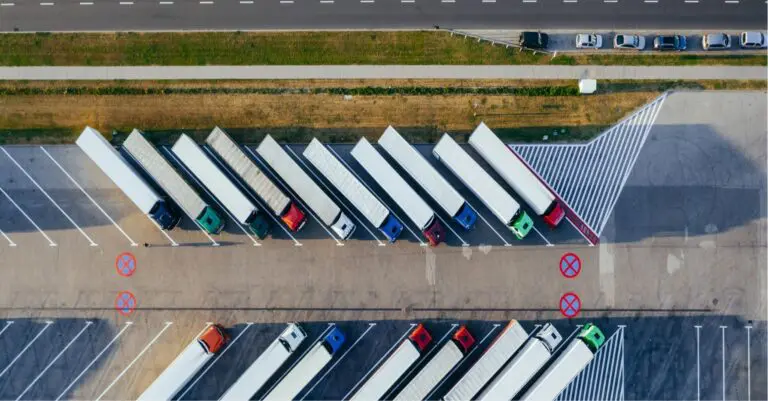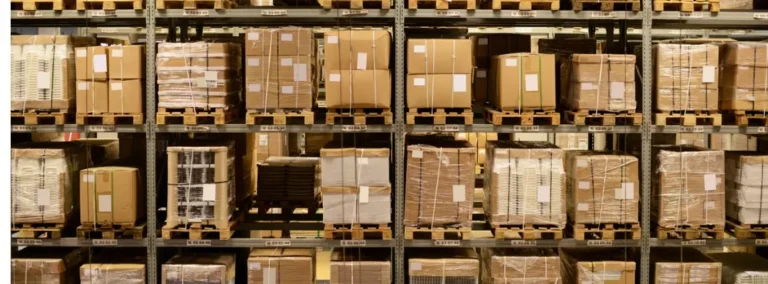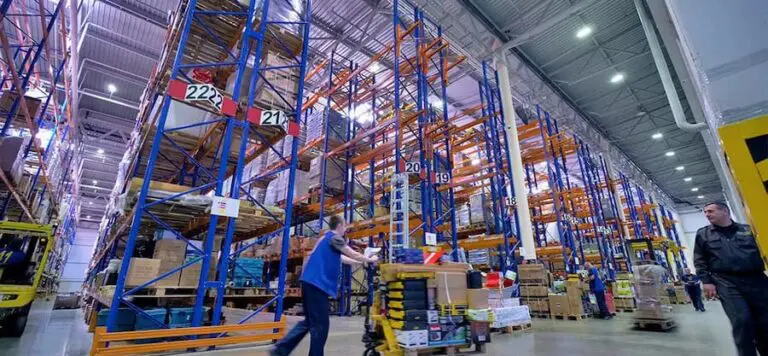The Quest for Perfection: Achieving Perfect Order Fulfillment with WSI
[This is an updated post from December 12th, 2023]
In ecommerce, the quest for perfection is relentless. Customer expectations are higher than ever before, with 73% of consumers saying that the customer experience (CX) is the number one factor they consider when purchasing from a company. For ecommerce brands, meeting customer expectations for perfect order fulfillment is vital.
However, given the complexities affecting the global supply chain, the ‘perfect’ order is increasingly difficult to achieve. Still, as companies increase efficiencies and seek new metrics to measure the performance of their supply chains, perfect order fulfillment has emerged as a logical and valuable standard by which to judge that performance.
What does it mean to fulfill a “perfect” order, though? What are its benefits? Risks? What’s the best way to calculate it? And is achieving perfect order fulfillment a realistic goal, especially when partnering with a third-party logistics provider (3PL)? Read on to learn more about perfect order fulfillment, and how WSI utilizes it in our dedication to excellence.
Defining Perfect Order Fulfillment
So, what does “perfect order fulfillment” mean? How do we measure this?
“Perfect order fulfillment rate” is the percentage of total orders fulfilled without any errors. That means no delays, no missing product, and no damages.
Calculating your Perfect Order Rate (POR)
Let’s say you’ve sent out 3,000 ecommerce orders in the past month. If 500 of them were involved with some sort of error, be it shipping delays or damaged product, you’d calculate your perfect order rate (POR) using the following:
[# of Orders With Errors] divided by [Total # Of Orders] X 100
So, you’d have:
[500/300] X 100 = 16.67 %
If 16.67 % of your orders included errors, this would give your business a perfect order rate of 83.33 % – not too shabby.
While there are many factors out of your control when it comes to shipping the ‘perfect’ order, tracking this metric is still an excellent way to identify inefficiencies within your supply chain performance. For example, if you’ve noticed a spike in your POR after implementing a new kitting process, it can identify a delay in the picking and packing process that could be solved with enhanced training.
Ultimately, not every order will be ‘perfect.’ But, keeping an eye on your overall POR enables brands to mitigate errors and improve customer satisfaction in the long run.

What does the perfect order look like?
“Perfect” looks different for every business, depending on its audience expectations and unique fulfillment needs.
For Company A, it can mean that an order is picked and packed accurately, shipped within 12 hours, and reaches the customer within 48 hours in good condition. For Company B, the condition standards may change, or the timeframe may be flexible.
At its core, perfect order fulfillment revolves around three main metrics: accuracy, timeliness, and condition. Each plays a crucial role in ensuring customer satisfaction.
- Accuracy: Ensuring that customers receive exactly what they ordered.
- Timeliness: Delivering orders within the promised timeframe.
- Condition: Ensuring products arrive in pristine condition, free from damages.
While many customers take the above for granted, achieving these requirements can be daunting. Order errors, unforeseen delays, and product damages during the shipping process can tarnish the customer experience, jeopardizing customer loyalty and retention.
This is why using the above metrics is such a helpful indicator of a “perfect” order being fulfilled: if expectations in these areas are met, the customer’s experience is generally a positive one.
Beyond on-time delivery and pristine products
In a highly competitive market, the right time, the right place, and the right product is only the bare minimum. Ensuring an exceptional customer journey (beyond perfect order rate) means brands need to level up their delivery performance with a stellar unboxing and post-purchase experience.
After all, once a product is delivered, the only guaranteed interaction with your brand is when a customer receives the package. This moment is an incredible opportunity to enhance brand loyalty and customer retention.
How? By surprising and delighting customers with fulfillment marketing such as branded packaging, exclusive discount codes, QR codes for social channels or product resources, and even sample products is a surefire way to increase customer satisfaction.
To truly go above and beyond in the delivery process, brands will need to work with an experienced partner who can optimize fulfillment and pack each order with the utmost care.
The Role of a 3PL in Perfect Order Fulfillment
Achieving perfect order fulfillment requires seamless operations and appropriate resources. This is where third-party logistics partners (3PLs) come in, offering the following advantages:
- Deep-Seated Expertise: 3PLs bring years of experience to the table, having navigated the challenges of logistics across diverse industries (and in WSI’s case, for over 50 years). This expertise allows them to anticipate potential pitfalls, devise effective strategies, and ensure that the fulfillment process is executed flawlessly no matter the challenges.
- Resource Allocation: One of the biggest benefits of partnering with a 3PL is access to their vast network of resources. From state-of-the-art warehousing facilities to a robust transportation network, 3PLs are equipped to handle orders of any scale, ensuring they reach their destination in pristine condition.
- Technological Capabilities: In an age where technology drives efficiency, 3PLs are at the forefront of integrating cutting-edge solutions into the logistics process. Real-time tracking systems and automated warehousing processes are just a few of the tools in their arsenal. These technologies streamline operations and enhance transparency, allowing businesses complete control of their fulfillment.
- Best Practices Implementation: With a finger on the pulse of the logistics industry, 3PLs stay abreast of emerging trends and best practices. By implementing these into the order fulfillment process, they ensure that businesses remain competitive in a changing world, meeting and often exceeding customer’s changing expectations.
- Value-Added Services: No matter the ask (custom kitting & bundling, handwritten notes, product samples, and more) the right 3PL will know how to customize your fulfillment operation without sacrificing efficiency. They should have proven SOPs that allow them to scale your volume up, so you can continue delighting customers with every delivery.
Whether it’s drastically reducing order errors, achieving lightning-fast delivery times, or optimizing inventory management, the results speak for themselves. More than just a logistics provider, 3PLs can function as transformative strategic partners in the quest for perfect order fulfillment.
Of course, it’s also important to remember that there’s more to an ideal fulfillment partnership than the measurement of any one single metric. Perfect order fulfillment is just one of many, including reverse logistics, warehousing & inventory, and affordability. So when choosing the right 3PL to partner with, do so with an eye on their comprehensive capabilities, and how those fit with the particular vision and needs of your business.

Challenges and Solutions
While 3PLs offer numerous advantages on the journey toward perfect order fulfillment, the journey itself isn’t without its challenges:
- Communication: One of the most prevalent challenges is the potential for communication discrepancies between businesses and their 3PL partners. Misunderstandings or lack of clarity can lead to errors, delays, and inefficiencies.
- Inventory Management: Striking the right balance in inventory levels is a delicate task that requires significant experience and constant strategic management. Overstocking can inflate costs, while understocking risks order fulfillment delays and potential customer dissatisfaction.
- Multichannel Logistics: As businesses expand their reach across various sales channels, managing logistics becomes increasingly intricate. Each channel may have its own set of requirements, necessitating tailored logistics strategies.
- Global Logistics: Venturing into global markets brings its own set of challenges. From navigating customs regulations to managing time zone differences and language barriers, global logistics is a complex beast.
Still, a good 3PL is familiar with these challenges and provides robust strategies to address them, such as:
- Enhanced Communication Protocols: Establishing clear communication channels and regular check-ins can bridge potential gaps. Utilizing collaborative tools and platforms ensures that both parties are always on the same page.
- Advanced Inventory Management Systems: Leveraging technology can simplify inventory challenges. Modern inventory management systems offer real-time tracking, predictive analytics, and automated replenishment triggers, ensuring optimal stock levels at all times.
- Tailored Multichannel Strategies: Recognizing the unique demands of each sales channel and crafting bespoke logistics strategies can mitigate challenges. This might involve developing dedicated warehousing solutions or specialized packaging and delivery protocols.
Measuring and Improving Perfect Order Fulfillment
Tracking and measuring order fulfillment metrics is paramount to achieving perfect order fulfillment. Key Performance Indicators (KPIs) provide insights into accuracy, timeliness, and product condition, serving as benchmarks for continuous improvement.
But improvement takes more than measurement. It also requires a culture that prioritizes optimization and progress, one that regularly reviews processes and stays receptive to feedback.
At WSI, we use our trademarked principles of Condition, Count, and Time ® to ensure we meet our customers’ high expectations around perfect order fulfillment. While we’re aware that no 3PL will be perfect in every way, it’s our philosophy that providing absolutely reliable services requires our commitment to getting customers’ products to their destinations in the right condition, at the right count, and on time, every time.
All of our operational practices exist to make sure we can deliver on this promise safely.
Transform Your Fulfillment Processes with WSI’s Expertise
While the pursuit of perfect order fulfillment is challenging, it’s not impossible.
Partnering with a 3PL that’s invested in transparently measuring supply chain performance, engaging in accurate documentation, and ensuring continuous improvement efforts allows brands to get one step closer to delivering the ‘perfect’ order.
With the right strategies, technologies, and a partnership with a capable, experienced 3PL like WSI, businesses can set, pursue, and improve their fulfillment performance.
Supply chain operations are nothing if not an imperfect science. However, the pursuit of perfection remains at the heart of what it means to deliver excellence consistently to our partners.
If you’d like to learn more about WSI’s end-to-end fulfillment services, speak with one of our experts today.
About the Author

Peter Davis
Peter Davis is the Vice President of Fulfillment at WSI, bringing a blend of experience in logistics, business, and corporate law. Peter works across teams, with the goal of using an interdisciplinary approach to identify gaps and drive previously unseen solutions. WSI’s commitment to this approach is a key reason for its success in delivering reliable and insightful fulfillment services over the last six decades.









